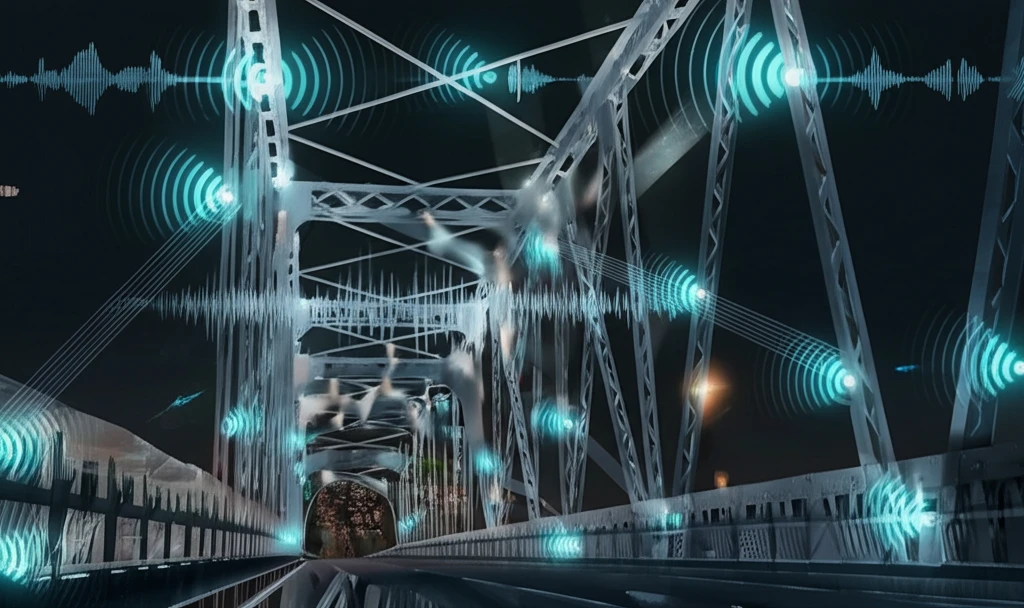
Decoding Steel Fatigue: How Acoustic Emission Can Save Infrastructure
"Learn how cutting-edge acoustic emission techniques are revolutionizing the detection of structural weaknesses in aging steel infrastructure, ensuring safety and longevity."
Our world relies on vast networks of steel structures—bridges, pipelines, pressure vessels—that silently bear immense loads every day. But what happens when these materials, subjected to relentless stress and environmental factors, begin to weaken? The answer could lie in an innovative technology known as acoustic emission (AE), a method that 'listens' to the subtle sounds of material degradation, offering a proactive approach to infrastructure maintenance and safety.
For decades, industries have grappled with the challenge of detecting hidden defects and fatigue in steel components before they lead to catastrophic failures. Traditional inspection methods often involve costly and time-consuming shutdowns, and even then, they might miss critical flaws. Acoustic emission technology provides a real-time, non-destructive way to monitor the health of steel structures, promising to revolutionize maintenance practices and extend the lifespan of critical infrastructure.
This article delves into the science behind acoustic emission, exploring how it is used to identify the telltale signs of damage in carbon steel and ferritic alloy-steel. We'll examine real-world applications, discuss the benefits and limitations of the technology, and look at the future of acoustic emission as a vital tool in safeguarding our infrastructure.
What is Acoustic Emission and How Does it Work?

Acoustic emission is a phenomenon where materials release energy in the form of acoustic waves when they undergo stress or deformation. These waves, though often imperceptible to the human ear, can be detected by highly sensitive sensors. In the context of steel structures, acoustic emission occurs when tiny cracks form, grow, or when there's movement at grain boundaries within the metal. Each of these events generates a unique acoustic signature, providing valuable insights into the material's condition.
- Real-Time Monitoring: AE allows for continuous, real-time assessment of structural health, enabling immediate detection of emerging issues.
- Non-Destructive Testing: Unlike some traditional methods, AE doesn't require taking the structure out of service or causing any damage.
- Early Detection: AE can detect damage at a microscopic level, long before it becomes visible or causes a significant problem.
- Comprehensive Assessment: AE provides a holistic view of the structure, identifying areas of high stress and potential failure points.
The Future of Infrastructure: A Sound Investment
As our infrastructure continues to age, the need for innovative and reliable monitoring techniques will only grow. Acoustic emission technology represents a significant step forward in ensuring the safety and longevity of steel structures. By 'listening' to the subtle signs of material degradation, we can move from reactive repairs to proactive maintenance, saving lives, reducing costs, and building a more resilient future.
